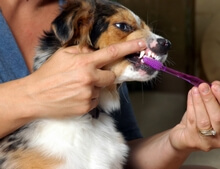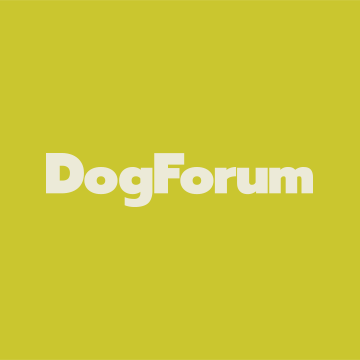You might find these articles interesting.
Daily tooth brushing and professional dental cleanings on an as-needed basis are the best ways to prevent the formation of periodontal disease in dogs, but diet can play an important role. This is especially true when daily tooth brushing is not possible, either because of a dog’s temperament or...
www.petmd.com
Can eating kibble really produce cleaner teeth and prevent canine dental disease? Learn the surprising truth about dry dog food.

www.dogfoodadvisor.com
My own experience is with kibble versus a commercial raw diet (which is the same consistency of most canned diets). When I feed my dogs a kibble meal, I don’t hear any crunching sounds, so I suspect it goes down whole (verified by the few times they later vomit it up). If so, I doubt it’s doing ANYTHING to keep their teeth clean. The same is true of the raw (there’s not much chewing going on). I also notice that when my dogs eat a biscuit or are fed slowly enough that they do chew the kibble, I find pasty food goo on their molars (sort of like if we ate crackers without water). To me that says that any scraping action by chewing the dry kibble is cancelled out by the pasty food that sits on the outside of the molars.
If you are concerned about keeping your dogs teeth clean, then the best thing to do would be to brush them every day and/or give them appropriate things to chew on (raw knuckle bones, Nylabones, or chews designed specifically for a dog’s dental health). Unless your dog chews his kibble, or you choose to fed the kind of raw diet where you dog is actually eating animal body parts (chicken backs, turkey necks, etc), I don’t think you’ll see much difference in dental health for a canned versus kibble diet.
As for the question about frequency… I don’t think there’s a hard and fast rule. I think historically I’ve switched my puppies to two meals a day between 4 and 6 months. But even as adults, I sometimes add a lunch if I think they’re getting too thin. I don’t like to feed large meals due to bloat concerns (something else you should research if it’s not something you are already familiar with).
Since you are currently feeding a grain free diet you should also read up on the potential connection between grain free diets and dilated cardiomyopathy (DCM), although it looks like your current food does not include legumes (peas, etc) which is the current theorized cause of lower taurine absorption).
![]()







